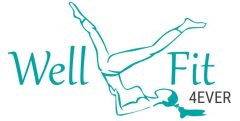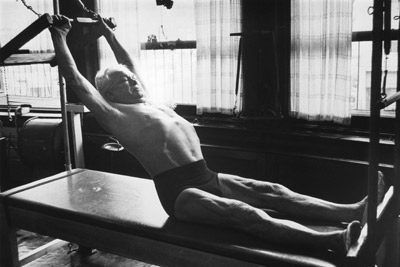The reason I got involved in nutrition was influenced by my wife’s Pilates practice. She has been practicing STOTT PILATES for over seven years and the majority of her clients are older, post-menopausal females. I have seen the positive effects of Pilates on them—one lady could not walk upstairs without assistance but after a few months doing Pilates, she can walk stairs without any assistance.
Up to this point I had not done any database search on the Pilates method, but to my surprise there are studies being conducted with promising results.
Osteoporosis (OP) is one of the most common bone diseases, with many persons experiencing “pain, functional loss, social isolation, emotional disturbances”[1]. The common theme for treating OP is to prevent bone loss through exercise, as studies have shown improvements in Bone Mass Density (BMD) after conducting exercise over a time period[2]. One type of exercise program that was developed post-WWII by Joseph Pilates was the Pilates method[1]. There are different branches of Pilates but one, the STOTT PILATES method, focuses on rehabilitation by integrating physiotherapy with Pilates. The two studies outlined here do not mention what style, but the results of the program were significant.
The purpose of Pilates is to improve the core (trunk) strength, improve flexibility and posture[1]. Pilates has also been shown to have positive effects on quality of life, balance, reduction in pain and an increase in BMD. Personally I have seen this on a daily basis in my wife’s practice. She uses many props and machines (Reformer, Chair, Vertical Frame and Barrel) to support elderly clients who cannot move some body parts without assistance. The exercise can be quite challenging, but has the ability to progress with the client’s abilities—cables and bands can support movement while improving range of motion. The only downside to this method is the reliance on equipment needed for special populations, like OP sufferers—using only the mat is beneficial, but a wider range of equipment is really needed for more advanced conditions. This means some clients will have to travel to studios to get the therapy they need or in the case of older populations the placement of small studios close to or in retirement centers can increase the likelihood of clients participating in the program. In the end, no matter what equipment is used, the overall benefit of doing Pilates by osteoporosis clients is shown to be worth the time and effort.
[1] Kucukcakir, N., Altan, L., & Korkmaz, N. (2013). Effects of Pilates exercises on pain, functional status and quality of life in women with postmenopausal osteoporosis. Journal of Bodywork & Movement Therapies, 17; 204-211.
[2] Angin, E., Erden, Z., & Can, F. (2015). The effects of clinical Pilates exercises on bone mineral density, physical performance and quality of life of women with postmenopausal osteoporosis. Journal of Back and Musculoskeletal Rehabilitation, 28; 849-858.
Contributed by Robert Burritt

